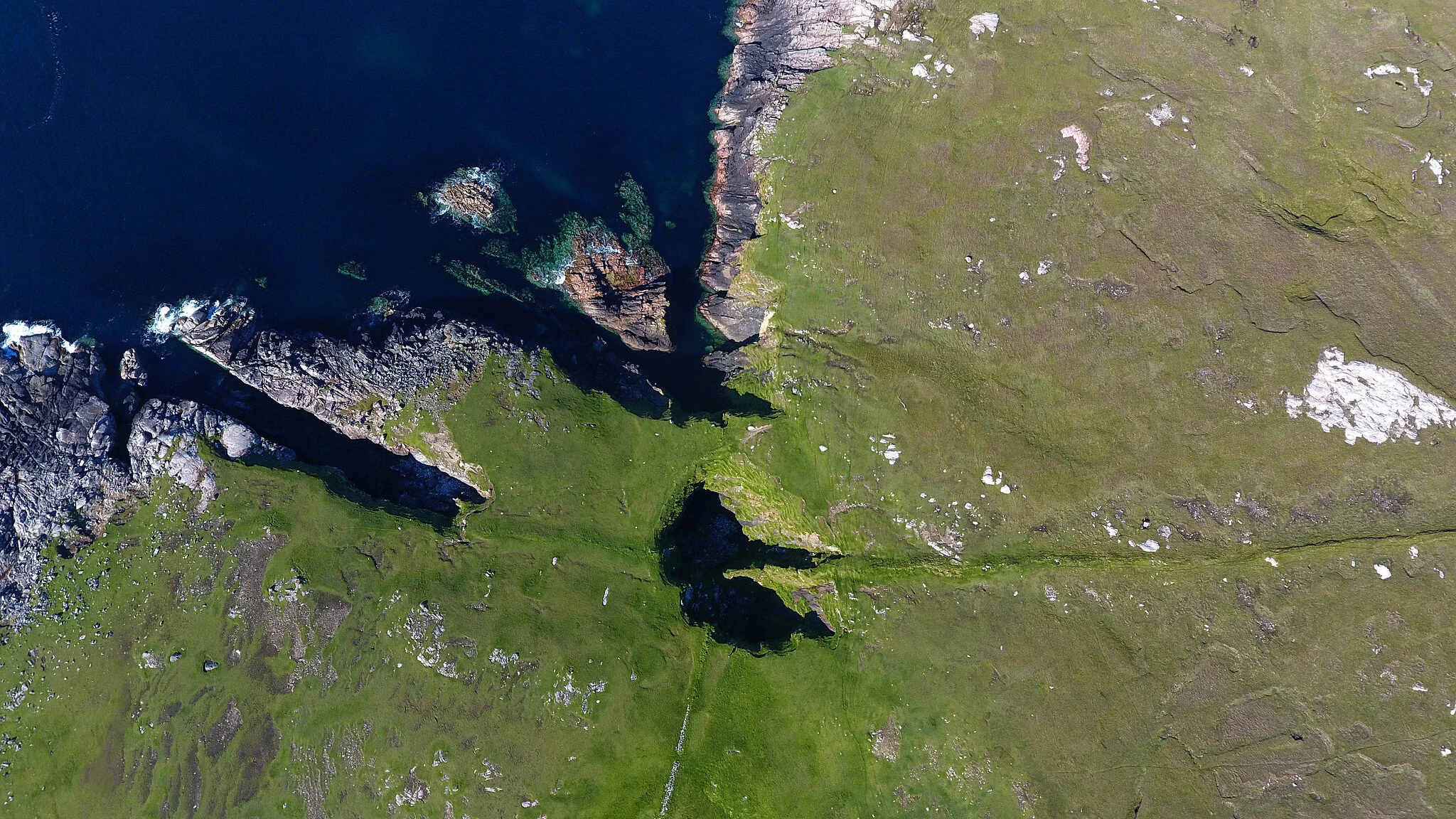Scolpaig is one of the natural wonders of the Western Isles and one of North Uist’s most spectacular landscapes.
It is an incredible combination of beach, cliff, machair, loch and peat land and is home to innumerable species of wildlife including protected species such as otter, white tailed eagle, golden eagle, corncrakes and hen harrier. Atlantic waves crash onto the white sand beaches and carve natural arches into the cliff face where a vast number of sea birds nest.
This coastline, with its spectacular sea caves, is well documented in all the walking guides of the Western Isles and for many years has welcomed wilderness explorers from both the local area and from all around the world who seek the untouched natural capital of the Outer Hebrides. Walkers and cyclists of the Hebridean way pass through Scolpaig on their way through the islands, pausing to take in the unparalleled view across the Atlantic to the dual World Heritage Site of St Kilda.
It also encompasses farm land that has been worked for agricultural purposes for many generations and sheep roam over the grass and cliff land, feeding on the wild flowers of the machair. The historical monument of Scolpaig tower is an iconic image of Hebridean history.
Scolpaig is designated as a National Scenic Area, meaning it is one of the 40 most beautiful areas in Scotland. The NSA designation is intended to protect our most beautiful landscapes from inappropriate development.
CLICK HERE - TO SIGN THE PETITION
click here for Sample Letters of Objection
“Follow the coast upwards from the curved white sands of Scolpaig bay, skirting round the deep gullies where the land falls away in ragged slopes and steps. Below, the incoming tide gently washes into torn black caves and crevasses. That’s on a good day. When it’s wild, immense walls of spray rise high into the air, reaching the land and coating the heather in flecks of foam like giant errant snowflakes.
At the top of the hill, the land takes a gentle drop down towards a gully. The rocky cliff face looks as if a serrated blade has been thrust through the land, leaving narrow broken ledges where dark eyed fulmars rest. At the mouth of the cave below, the incoming surf collides with the outgoing water, swirling in a frenzied whirlpool.
Turn inland and follow the scattered remains of an old stone wall. A silver cloud bursts from the land, a stream of rock doves fleeing towards the sea on glittering wings. For a moment, you wonder where they came from, and then you see it. Sloc a Rodha – a massive, rock-strewn chasm, torn from the land. The dancing sea pinks and primroses coating its walls do little to soften the impact. Beyond it, the stone wall continues up the hillside.
Turn back to the ocean and, if you’re lucky, you might glimpse the islands of St Kilda crouched on the horizon, the long, irregular shape of Hirta and the jagged bones of Boreray. And as you watch, they might just disappear again, as if they were never really there.”
